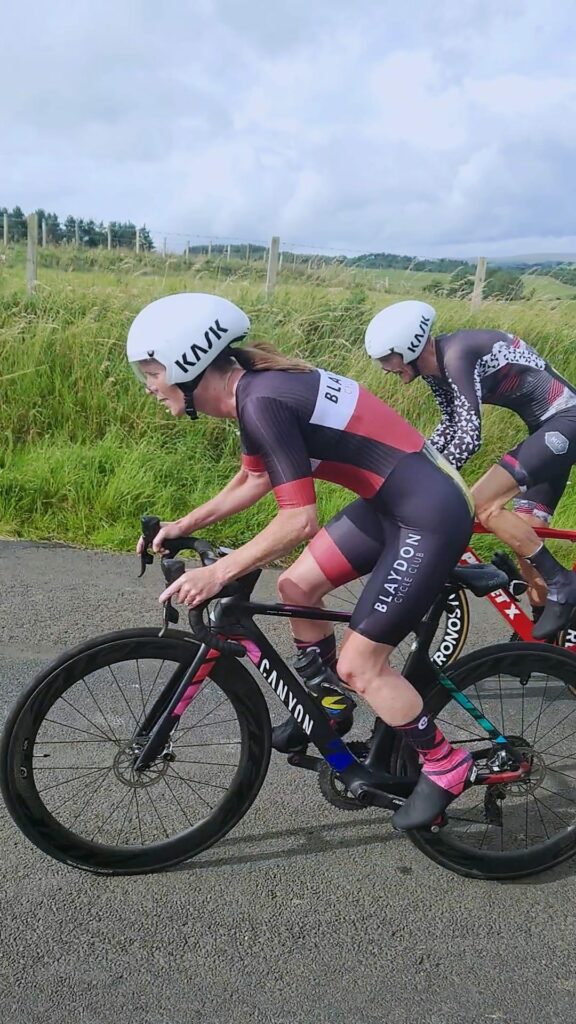Tracey Sample has been coaching cyclists and triathletes for well over a decade. Here she illustrates the enormous benefits that Time Trialing will bring to your cycling performance.
Do you want to get faster? Then read on!
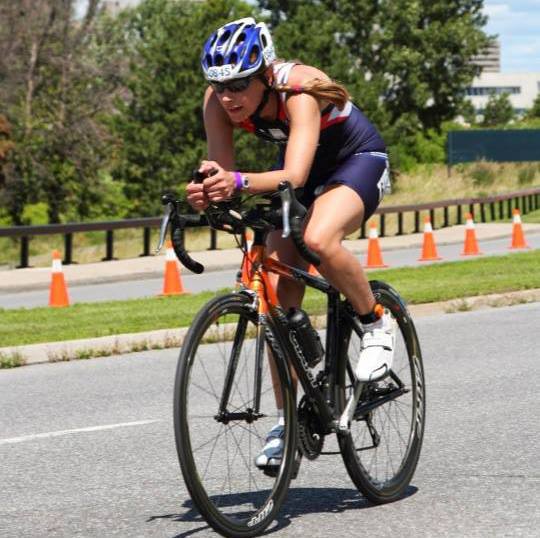
Is there a benefit for cyclists who compete in Cycling Time Trials?
This is a great question to ask because there is a short and a long answer.
Short Answer: YES
Long Answer: It depends on so many factors.
Firstly, what are Time Trials?
The Race of Truth – you against you.
No hiding behind other cyclists, just you riding your bike as fast as you can with cyclists starting at different times round you. The distances generally range from 10 miles to 100 miles and can be on quiet back roads or busy dual carriageways and very few of us are good enough to win, so we do it for other reasons.
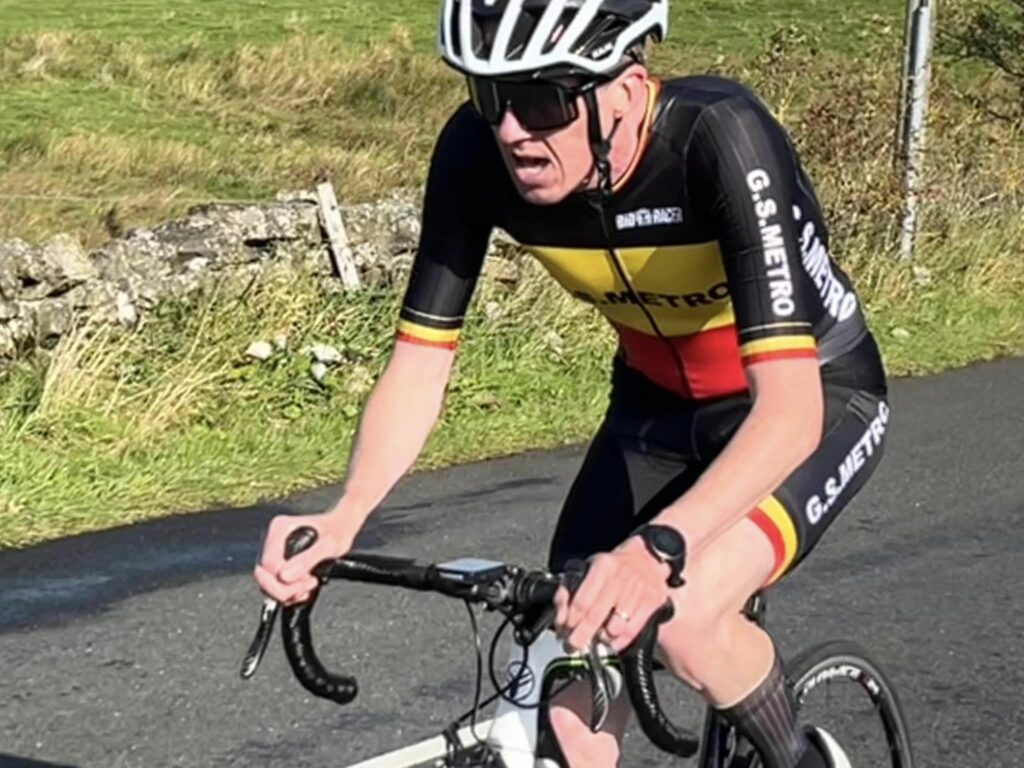
Open events (the non-club events – that generally count towards the season long BAR – more on this later) happen generally at the weekend, but you can pick up really friendly club events mid-week round the region.
See the links below for the dates of the open and club events for 2024. Open events cost £13-£15 due to higher levies by the national organisation for TT’s, Cycling Time Trials, but club events can cost as little as £5.
Open Events Calendar: https://www.nanddca.co.uk/2024-events-calendar/
Club Events Calendar: https://www.nanddca.co.uk/club-events-calendar/
So why should we do TT’s?
Other than it takes a bit of time out of your day and you are likely to finish mid to low on the results sheet against the super cyclists, there are some really good benefits of doing time trials including the specific training, benchmarking your performance, testing your kit, tweaking your position on the bike and honing race strategies. Maybe the question should be why you aren’t taking the time out to do a regular TT?
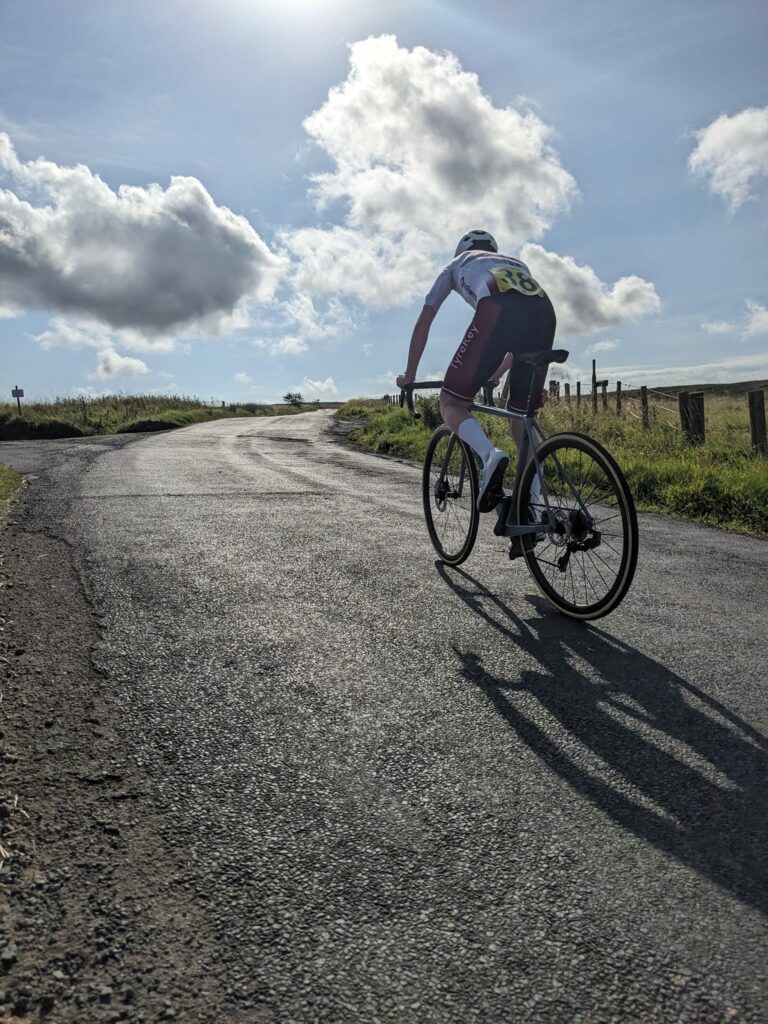
Specific Training
The 10 mile TT is the staple of the club event such as the regular mid-week Tuesday Derwentside 10, Wednesday Barnesbury 10 or Thursday Vags (Tyneside Vagabonds) 10. You can see the local club events calendar here: https://www.nanddca.co.uk/club-events-calendar/
Depending on your speed, it’s a 20-40 min effort which is the exact opposite of the “effort” you would put in on a Sunday ride. You don’t improve (unless you are new to cycling) by training slowly all the time.
Learning how to pace your bike leg is a hugely important and as much as you can do the practice bike rides in training, there is nothing better than testing your pacing/power/heart rate/perceived effort strategy out during a race. You will find out what you can do and if you get it wrong, you can “fail” in an environment where it doesn’t matter as you can go back the next week and try again with a slightly different pacing strategy.
If you have a balanced training plan, you will typically be doing lots of easy miles, some strength building sessions (like hill reps) and a speed session each week. A TT can be used as that speed session. It is hard work but if you go along to an event with a clubmate for company or moral support, it makes the session easier and because it’s an actual race, you will push yourself harder than if you just tried to go out and do a speed session on your own.
If you get your recovery right afterwards, you will get some great physiological adaptations which will make your muscles stronger, and this is what makes you go faster! There are other ways you can do your speed work but how many of the vomit inducing sessions are as much fun?
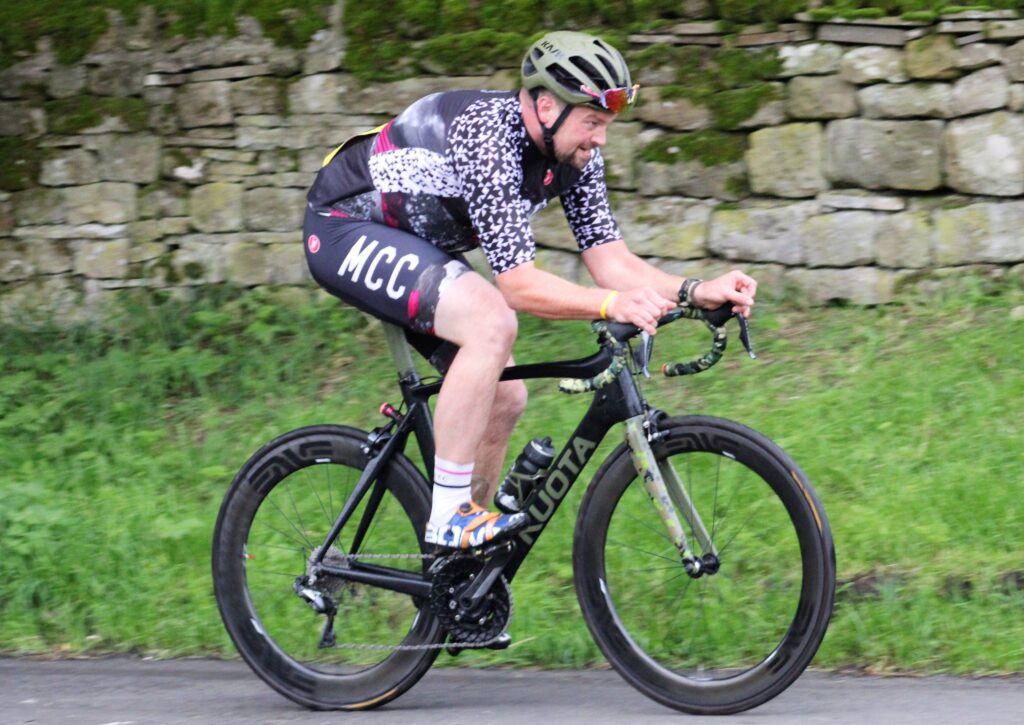
Benchmarking
A weekly TT will make you faster. How do we know this? Because you are testing regularly, like at the Park Run. You try to beat your time from last week and you’ll know who rides a bike at about the same speed as you so you can have a bit of competition to get fit enough to beat them and move up the results sheet. You will know how you fair in comparison to others and yourself in the wind or rain, on the flat or hills, or if the heat or cold affects you more than others.
Essentially, if you know what your “normal” is, you know what is not normal and this can help you make choices on which cycle races or triathlons or time trials suit you better, especially if you are trying to find a race to qualify for GB Age Group racing. Tactically picking a race that suits your style of racing could be a huge advantage.
But, simply put, trying to beat your previous time is a big motivator so the more you do it, the quicker you will improve.
Testing Kit/Position
“Nothing new on race day” is the mantra of coaches everywhere.
However, everything is new to you at some point, so you have to test it somewhere. Time Trials are great for progressively testing to optimise your race plan. If you have worked early season on optimising pacing and you know your normal pace around a course, you can start changing things up to see if they make you any quicker. There is nothing more satisfying than practicing on your road bike and then sticking a set of tri bars on your bike and flying round to a 90 second PB. This really demonstrates to yourself the benefits of the changes.
So, what can you test?
• Nutrition – try a race with sub-optimum feeding and you will struggle towards the end.
• Race suit/Cycle kit – does it rub? Can you access your nutrition in the race position? Does it have enough padding? Does it slow you down?
• Aero Position – Do you want to go full aero position (which can be set up during a bike fit) only to find it is too aggressive and you can’t actually hold the position?
• Gadgets – New parts for your bike might make a difference. Marginal gains
• Cadence – mash a big gear or spin your legs? Both are valid ways to ride your bike but what works best for you?
All these can be optimised to know what works best for you.
The BAR – The Best All Rounder competition.
What is the BAR?
This makes it sound like it is something unattainable but its just a season long competition that gives those of us who can’t win, something to compete towards as there is a lot of kudos in completing the BAR.
It consists of completing some short, (up to 13 miles), Medium (14-39 miles in the NE) and Long (over 40 miles) plus you need to marshal a race. There are choices in all these distances, but it makes it fun to compete against that person who beat you last week and once you get in to it, you can use tactics to go to races where you might get better points for the BAR and move up the standings.
Dual Carriageway vs Back Roads Events
I hear a lot of people say they don’t like the Dual Carriageway (DC) events. They certainly seem scary before you do your first one, but the CTT compile statistics every year on a national basis and there are fewer accidents on the DC events than on the country/back roads. There has never (to my knowledge been a year where there have been more accidents on DC vs country road TT’s). Still the DC events can be intimidating with all the cars coming past, which is why the club events are a great introduction to Time Trialling.
Conclusion
You can train in so many different ways but TT’s give you that truly hard weekly session you struggle to complete, and it is nice to be able to have company to do this. If you do regular TT’s, you’ll be faster, happier, and better prepared than you have ever been before.
